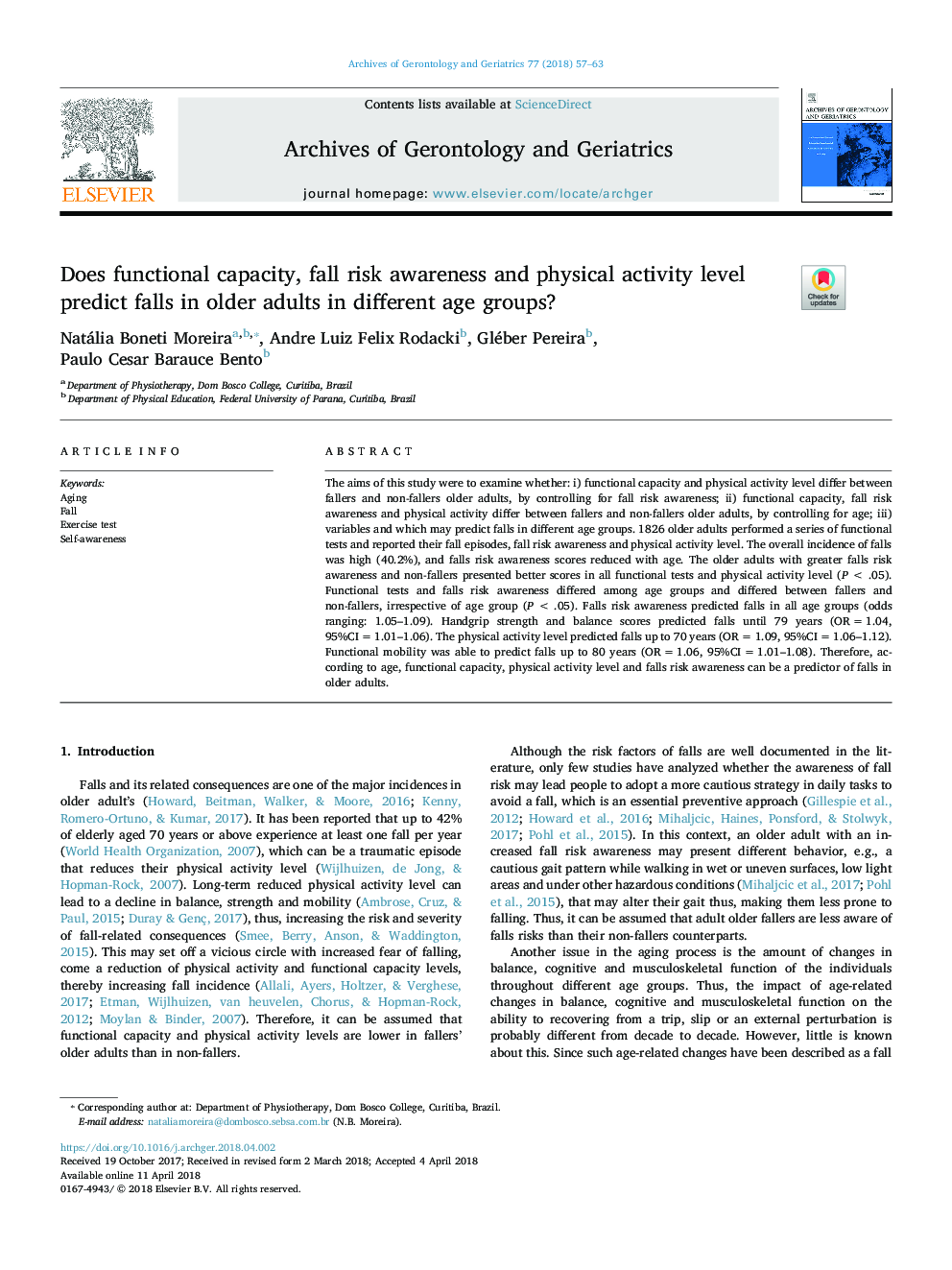| Article ID | Journal | Published Year | Pages | File Type |
|---|---|---|---|---|
| 8257384 | Archives of Gerontology and Geriatrics | 2018 | 7 Pages |
Abstract
The aims of this study were to examine whether: i) functional capacity and physical activity level differ between fallers and non-fallers older adults, by controlling for fall risk awareness; ii) functional capacity, fall risk awareness and physical activity differ between fallers and non-fallers older adults, by controlling for age; iii) variables and which may predict falls in different age groups. 1826 older adults performed a series of functional tests and reported their fall episodes, fall risk awareness and physical activity level. The overall incidence of falls was high (40.2%), and falls risk awareness scores reduced with age. The older adults with greater falls risk awareness and non-fallers presented better scores in all functional tests and physical activity level (Pâ¯<â¯.05). Functional tests and falls risk awareness differed among age groups and differed between fallers and non-fallers, irrespective of age group (Pâ¯<â¯.05). Falls risk awareness predicted falls in all age groups (odds ranging: 1.05-1.09). Handgrip strength and balance scores predicted falls until 79 years (ORâ¯=â¯1.04, 95%CIâ¯=â¯1.01-1.06). The physical activity level predicted falls up to 70 years (ORâ¯=â¯1.09, 95%CIâ¯=â¯1.06-1.12). Functional mobility was able to predict falls up to 80 years (ORâ¯=â¯1.06, 95%CIâ¯=â¯1.01-1.08). Therefore, according to age, functional capacity, physical activity level and falls risk awareness can be a predictor of falls in older adults.
Keywords
Related Topics
Life Sciences
Biochemistry, Genetics and Molecular Biology
Ageing
Authors
Natália Boneti Moreira, Andre Luiz Felix Rodacki, Gléber Pereira, Paulo Cesar Barauce Bento,
